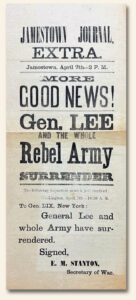Lead-up to a Nation… as reported in the newspapers of the day (November, 1775)…
December 5, 2025 by GuyHeilenman · Leave a Comment

Continental Currency – No Power to Tax or Regulate (Lead-up to a Nation – E14)
League of Friendship-Articles of Confederation Underscored National Power (Lead-up to a Nation-E15)
James Rivington – From Impartial to Loyalist (Lead-up to a Nation – E16)
The Liberty Bell – Proclaim Liberty Through the Land (Lead-up to a Nation – E17)
We hope you are enjoying this year-long trek to the 250th anniversary of The United States through the eyes of those who were fully engaged, first hand. As mentioned previously, all accounts are rooted in what they read in the newspapers of the day.
“History is never more fascinating than when read from the day it was first reported.” (Timothy Hughes, 1975)
Announcing: Catalog #361 for December, 2025 – Rare & Early Newspapers…
December 1, 2025 by GuyHeilenman · Leave a Comment
|
|
From Passion to Legacy: 50 Years Strong… and Counting…
November 28, 2025 by GuyHeilenman · 10 Comments
The following, penned by the founder of Timothy Hughes Rare & Early Newspapers, appeared on the front page of our most recent catalog (#361):

It was 50 years ago this month that the Rare & Early Newspapers business began.
Having been a collector of many things in my earliest of years, primarily coins, venturing into this fascinating world of old newspapers was a logical step. I never really saw a truly old newspaper until I stumbled across an 1826 Philadelphia newspaper at a local flea market, I was convinced I had discovered an unexploited hobby. So my new adventure began.
Although I started collecting somewhat earlier, I sold my first newspaper on December 1, 1975. I used a manual typewriter to list various newspapers on a legal-size sheet of paper, then making photocopies at a local college to print multiple sheets. When an issue or two sold, I typed up replacements and taped the listings over those that sold, then made more photocopies.
How to advertise in the pre-internet era? I would place small, classified ads in various history & collector-themed magazines. As for research, I kept a set of encyclopedias next to my desk.
Eventually, the single sheets of offerings turned into small catalogs. The first formal catalog was issued in the spring of 1978 and wasn’t even numbered, as I wasn’t sure there would be another.
This catalog you have in your hands is number 361. My ad mentioned “…send 25¢…” for the catalog, which more than covered the cost of postage. Imagine that!
It was always my goal to continue to offer more issues, earlier issues, and more historic offerings with each passing month. I’ve been pleased with our progress, and for those who have been with us for many years, hopefully you’ve noticed the dramatic growth in the range of our inventory. It was my hope that collectors would look forward to each catalog, anxious to discover new “goodies” we’ve not offered before.
I became semi-retired some 23 years ago with Guy Heilenman taking over, but I remain actively involved, primarily with buying inventory. My wife and I moved West to be close to family, but I get back to Williamsport for “hands-on” work about six weeks a year.
There will be no end to this business. We remain the only full-time dealers in early newspapers in the world. At some point another generation will take over, and our inventory and offerings will, hopefully, continue to expand. I hope to remain involved for as long as God allows.
Thank you all for 50 years of fun!
Tim Hughes
From the Vault: The top ten: “20th century”…
November 21, 2025 by TimHughes · 9 Comments
From this period in newspaper publishing history, displayability has much to do with the desirability of a newspaper, perhaps more so than historical significance. Since I come to this task of listing the “top ten” from the perspective of a rare newspaper dealer and knowing the requests we receive for certain events, the following list may not be the same as my most “historic” but they are my thoughts for the most “desirable” based on customer demand. Certainly FDR’s New Deal is more historically significant than the death of Bonnie & Clyde, but not more desirable from a collector standpoint. I’d be curious to hear of your thoughts.
 Here they are, beginning with number ten:
Here they are, beginning with number ten:
10) St. Valentine’s Day Massacre, Feb. 14, 1929 An issue with a dramatic banner headline, & ideally dated the 14th. Morning papers would be dated the 15th.
9) Death of Bonnie & Clyde, May 23, 1934 The gangster era remains much in demand, & perhaps due to the movie this event beats out Dillinger, Capone & the others from the era. A dramatic headline drives desirability–ideally with a photo–even if not in a Louisiana newspaper.
8.) Charles Lindbergh flies the Atlantic, May 22, 1927 The New York Times had a nice headline account with a map of the route, and the prestige of the newspaper always keeps it in high demand.
 7) Call-Chronicle-Examiner, San Francisco, April 19, 1906 I note a specific title & date for this event, as these 3 newspapers combined to produce one 4 page newspaper filled with banner heads & the latest news. No advertisements.
7) Call-Chronicle-Examiner, San Francisco, April 19, 1906 I note a specific title & date for this event, as these 3 newspapers combined to produce one 4 page newspaper filled with banner heads & the latest news. No advertisements.
6) Crash of the Hindenberg, May 6, 1937 The more dramatic the headline the better, & ideally with the Pulitizer Prize winning photo of the airship in flames.
5) Wright brothers fly, Dec. 17, 1903 Here’s where the significance of the event drives desirability over dramatic appeal. Few can argue the impact of manned flight on the world. Reports were typically brief & buried on an inside page with a small headline, so a lengthy front page report would be in top demand.
4) Stock market crash, October, 1929 Demand is driven by the dramatic headline and its wording. Too many newspapers tried to put an optimistic spin on the tragedy. Collectors want “collapse, disaster, crash” & similarly tragic words in the headline (how about Variety magazine’s: “Wall Street Lays On Egg”?)
 3) Honolulu Star-Bulletin, Dec. 7, 1941 “1st Extra” The defining issue from World War II but be careful of reprints as most issues on the market are not genuine.
3) Honolulu Star-Bulletin, Dec. 7, 1941 “1st Extra” The defining issue from World War II but be careful of reprints as most issues on the market are not genuine.
2) Chicago Daily Tribune, Nov. 3, 1948 “Dewey Defeats Truman”. What more need be said?
1) Titanic sinking, April 14, 1912 Certainly low on the historically significant list, but off the charts on the desirability scale, much due to the block-busting movie. The more dramatic the headline the better, and hopefully with a nice illustration of the ship going down.
My “honorable mention” list might include baseball’s “Black Sox” scandal of 1919, sinking of the Lusitania, end of World War II, D-Day, JFK’s election, the New Deal, a great Babe Ruth issue, etc. Maybe they would rank higher on your list. Feel free to share your top choices.
Lead-up to a Nation… as reported in the newspapers of the day (October, 1775)…
November 6, 2025 by GuyHeilenman · Leave a Comment

England Misses the Temper of the Times (Lead-up to a Nation – E9)
George Washington – Religious Freedom (Lead-up to a Nation – E10)
Ethan Allen and his Green Mountain Boys (Lead-up to a Nation – E11)
The Liberty Tree (Lead-up to a Nation – E12)
George Washington – Integrity, Leadership & Humility (Lead-up to a Nation – E13)
We hope you are enjoying this year-long trek to the 250th anniversary of The United States through the eyes of those who were fully engaged, first hand. As mentioned previously, all accounts are rooted in what they read in the newspapers of the day.
“History is never more fascinating than when read from the day it was first reported.” (Timothy Hughes, 1975)
Announcing: Catalog #360 for November, 2025 – Rare & Early Newspapers…
October 31, 2025 by GuyHeilenman · Leave a Comment
|
|
From the Vault: Headlines drive interest in World War II…
October 24, 2025 by TimHughes · Leave a Comment
For likely a multitude of reasons, interest in World War II newspapers ranks far higher than in the Korean War, World War I, or the Spanish-American War. It may be a generational thing, as most collectors today are children of World War II veterans and likely heard stories of the war first-hand, or found  newspapers in their parents attics which sparked an interest. One could debate a number of other possible reasons why other wars lack the intrigue found in that fought by the “greatest generation”.
newspapers in their parents attics which sparked an interest. One could debate a number of other possible reasons why other wars lack the intrigue found in that fought by the “greatest generation”.
Headline collecting has always been a focus for this hobby, and as any collector knows, bold, banner headlines did not become commonplace until late in the 19th century. With the increasing competitiveness of daily newspapers across the country–Hearst, Pulitzer & others rising to prominence–flashier front pages were needed to draw attention at the corner news stand. It’s a shame there is not more interest in the Spanish-American War and World War I as both events resulted in some huge, dramatic, & very displayable headlines.
Because there are a plethora of newspapers from the WWII era available, collectors have become very discriminating in what they collect. Only the “best of the best” will do, meaning just the major events and only those with huge and displayable headlines. If there is a “top 6” list of sought-after events, our experience is they would be: 1) attack on Pearl Harbor; 2) the D-Day invasion; 3) death of Hitler; 4) end of the war in Europe; 5) dropping of the atomic bomb; 6) end of the war in the Pacific. One could add any number of other battle reports such as Midway, battle of the Bulge, fall of Italy, Iwo Jima, battle for Berlin, and so much more. And we could step back before American involvement in the war and add Hitler’s invasion of Poland and the battle of Britain.
The bigger the headline the better. With some newspapers the entire front page was taken up with a headline and a related graphic. The U.S. flag was a common patriotic device. Tabloid-size newspapers commonly had the front page entirely taken up with a singular headline and tend to be better for display given their smaller size.
 And not just American newspapers draw interest. German newspapers hold a special intrigue, but the language barrier is a problem for many. But the British Channel Islands, located in the English Channel between England & France, were occupied by the Nazi during the war so their reports were very pro-Nazi while printed in the English language (ex., Guernsey Island). And the military newspaper “Stars and Stripes“, while certainly being American, was published at various locations in Europe and the Pacific. Collectors have a special interest in finding World War II events in the official newspapers of the American military forces. Plus there were a multitude of “camp” newspapers, amateur-looking newspapers printed on a mimeograph machine for consumption limited to a military base, and typically printed is very small quantities. Their rarity is not truly appreciated by many.
And not just American newspapers draw interest. German newspapers hold a special intrigue, but the language barrier is a problem for many. But the British Channel Islands, located in the English Channel between England & France, were occupied by the Nazi during the war so their reports were very pro-Nazi while printed in the English language (ex., Guernsey Island). And the military newspaper “Stars and Stripes“, while certainly being American, was published at various locations in Europe and the Pacific. Collectors have a special interest in finding World War II events in the official newspapers of the American military forces. Plus there were a multitude of “camp” newspapers, amateur-looking newspapers printed on a mimeograph machine for consumption limited to a military base, and typically printed is very small quantities. Their rarity is not truly appreciated by many.
For obvious reasons, there is also a high degree of collectible interest from those wishing to make sure certain aspects of history are not forgotten. The Holocaust, and the Nazi propaganda used to provide a rationale for eliminating the Jewish people, is well documented in newspapers from the era. In addition to the Holocaust and its atrocities, issues providing context through reporting other pre-war events such as the Great Depression, fascism, and increased militarism, are also desirable.
True to any collectable field, newspaper collectors are always on the lookout for an issue better than what they have, and collection upgrades are constant. Finding that special, rare, unusual or fascinating headline is what makes the hobby fun. Will interest in the Korean War and the Vietnam War gain more interest in future years? Perhaps so. With interest currently low and availability and prices very attractive, it might be a good time to explore.
Lead-up to a Nation… as reported in the newspapers of the day (Intro & Sept., 1775)…
October 3, 2025 by GuyHeilenman · Leave a Comment

British News Delayed – Lead-up to a Nation (E5)
Lord Dunmore and Colonial Unrest – Lead-up to a Nation (E6)
Patrick Henry – Lead-up to a Nation (E7)
Benjamin Franklin – Lead-up to a Nation (E8)
We hope you are enjoying this year-long trek to the 250th anniversary of The United States through the eyes of those who were fully engaged, first hand. As mentioned previously, all accounts are rooted in what they read in the newspapers of the day.
“History is never more fascinating than when read from the day it was first reported.” (Timothy Hughes, 1975)
Announcing: Catalog #359 for October, 2025 – Rare & Early Newspapers…
September 30, 2025 by GuyHeilenman · Leave a Comment
|
|
Lead-up to a Nation… as reported in the newspapers of the day (Intro & August, 1775)…
September 5, 2025 by GuyHeilenman · Leave a Comment

Shown below are the first four installments.
The Necessity of Taking Up Arms – Lead-up to a Nation (E1)
The Olive Branch Petition – Lead-up to a Nation (E2)
The Speech of Edmund Burke – Lead-up to a Nation (E3)
England Declares War – Lead-up to a Nation (E4)
We hope you enjoy this year-long trek to the 250th anniversary of The United States through the eyes of those who were fully engaged, first hand. All accounts will be through what they read in the newspapers of the day. After all, as Tim Hughes proclaimed back in 1975: “History is never more fascinating than when read from the day it was first reported.”





 Catalog #360 (for November)
Catalog #360 (for November) October’s catalog (#359)
October’s catalog (#359)